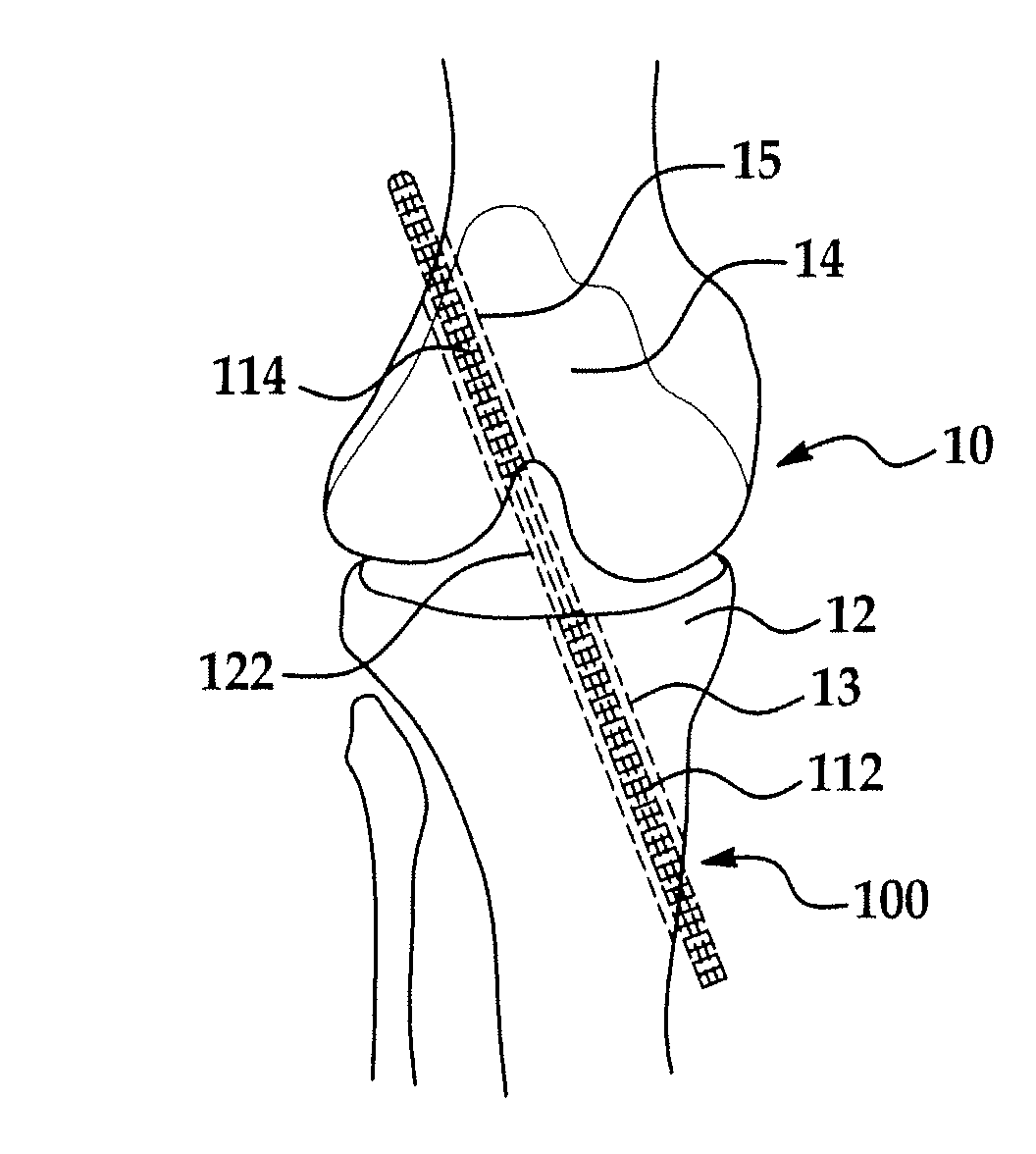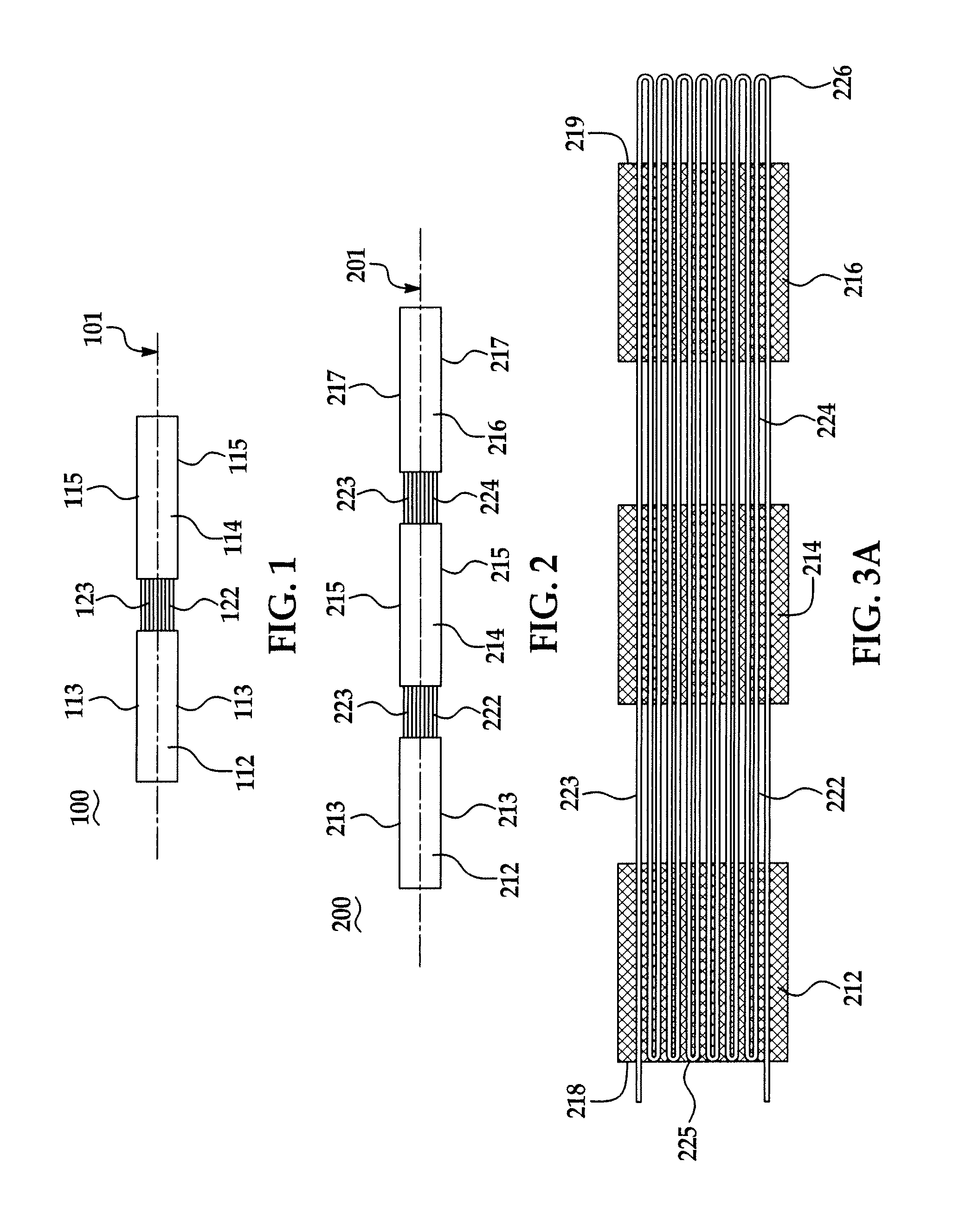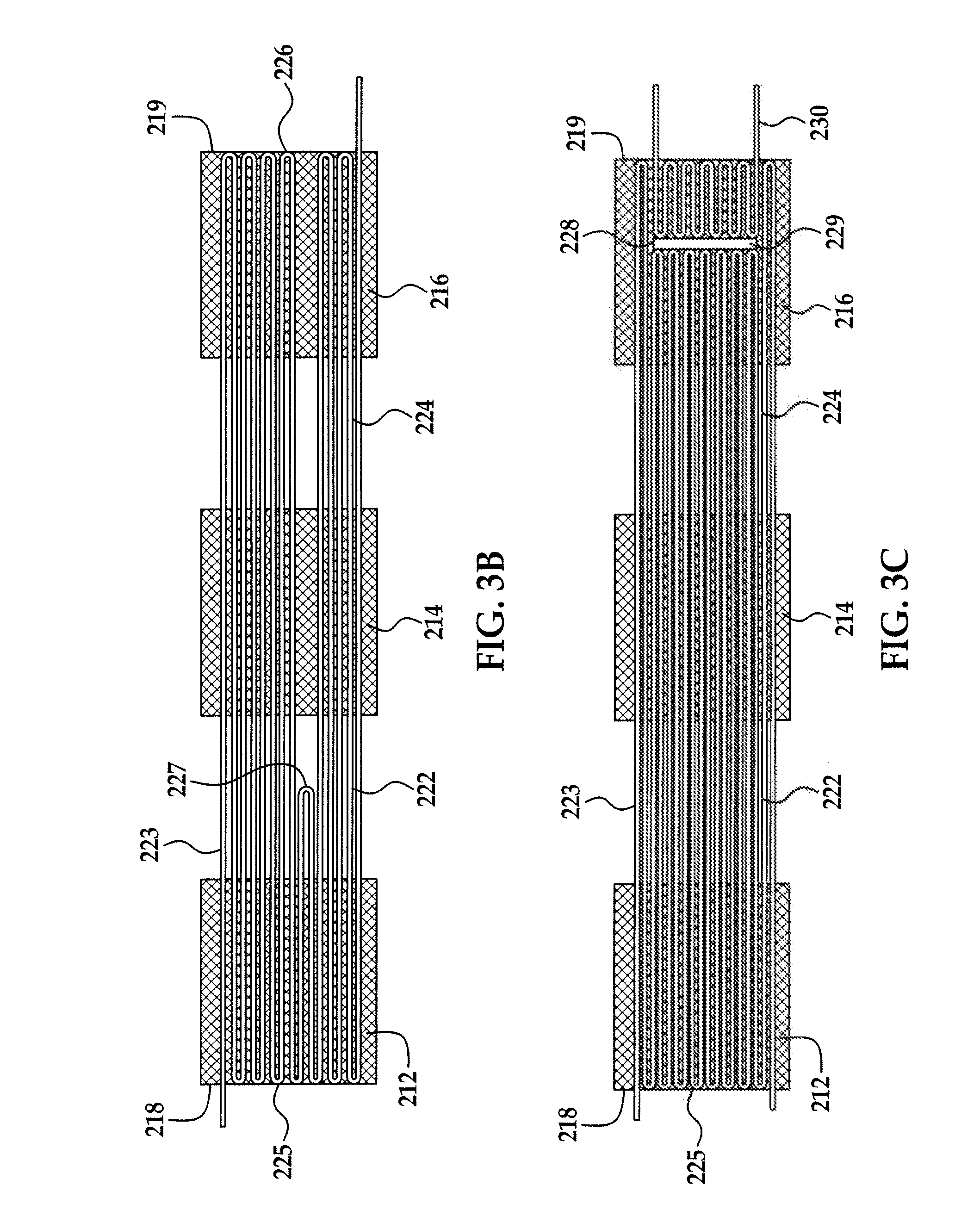Prosthetic device and method of manufacturing the same
a technology for prosthetic devices and ligaments, applied in the field of prosthetic devices for ligament reconstruction, can solve the problems of severe limitations in mobility, pain and discomfort, rupture or tear, etc., and achieve the effect of sufficient flexibility
- Summary
- Abstract
- Description
- Claims
- Application Information
AI Technical Summary
Benefits of technology
Problems solved by technology
Method used
Image
Examples
Embodiment Construction
[0070]Aspects of the present invention are described herein with reference to exemplary embodiments directed to a multi-section graft, or prosthetic device, that is used to reconstruct an ACL. In particular, FIG. 1 illustrates a first embodiment of a ligament prosthesis 100 having three sections 112, 114, and 122 arranged along a longitudinal axis 101. The ligament prosthesis 100 has two knitted intra-osseous sections 112 and 114, which are separated by an intra-articular section 122. The knitted sections 112 and 114 engage the bone tunnel or anchor sections when the ligament prosthesis 100 is used to reconstruct an ACL. Meanwhile, the intra-articular section 122 acts as the ligament portion of the prosthesis 100.
[0071]Preferably, ligament prosthesis 100 is generally formed of polymers, such as protein biomaterials. In particular, embodiments may be formed from silk, such as Bombyx mori silkworm silk fibroin. The raw silk fibers have a natural globular protein coating known as seric...
PUM
 Login to View More
Login to View More Abstract
Description
Claims
Application Information
 Login to View More
Login to View More - R&D
- Intellectual Property
- Life Sciences
- Materials
- Tech Scout
- Unparalleled Data Quality
- Higher Quality Content
- 60% Fewer Hallucinations
Browse by: Latest US Patents, China's latest patents, Technical Efficacy Thesaurus, Application Domain, Technology Topic, Popular Technical Reports.
© 2025 PatSnap. All rights reserved.Legal|Privacy policy|Modern Slavery Act Transparency Statement|Sitemap|About US| Contact US: help@patsnap.com



